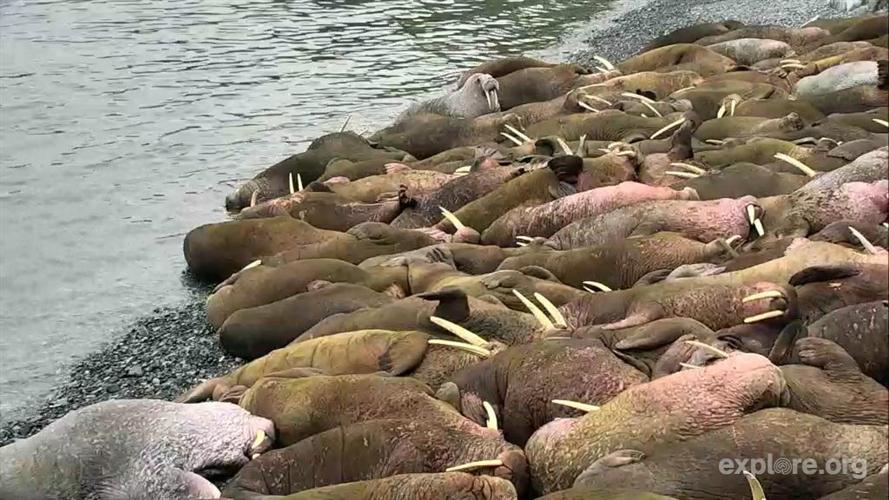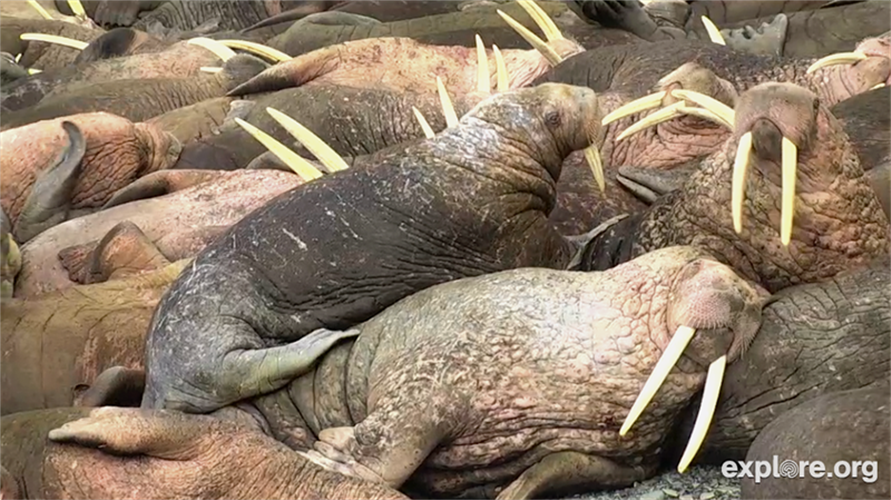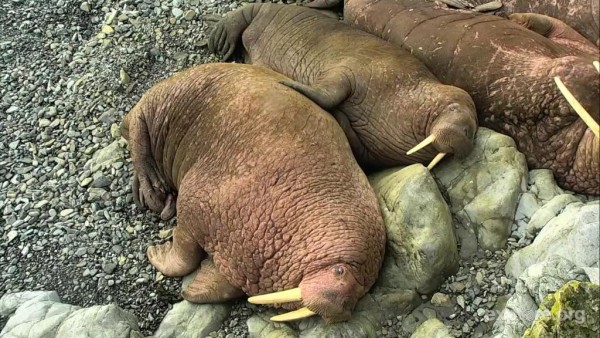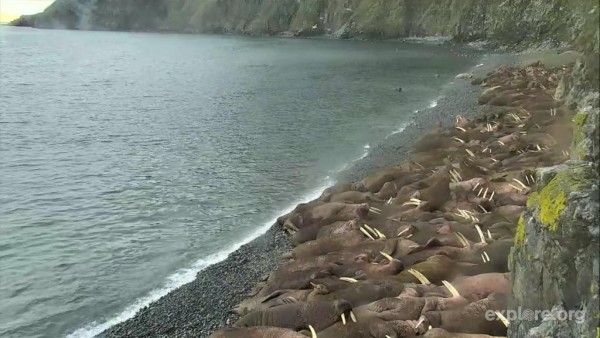Published in the Ocean Watch column, Honolulu Star-Advertiser © Susan Scott
June 1, 2015
Last week, I received an unsigned email from someone who’s been watching walruses via a live stream (at: 808ne.ws/1BAGACw) from Alaska’s Round Island.
“Some walruses poke others with their tusks, almost to the point of being pushy jerks,” he or she wrote. The writer wanted to know what was happening in that “great mound of walrus?” Is there a pecking order as to what part of the beach individuals lie on? And why do they mostly lie on their backs?

The entire Pacific walrus population (there’s an Atlantic one, too) winters in the Bering Sea on and around the pack ice. Mating takes place in the water in January and February, with males fighting one another for females.
When two males meet, they raise their heads from the water and turn sideways, showing their tusks. Often that’s all it takes, and the male with the smaller tusks backs down. If the rivals have tusks of equal size, the fight is on; sometimes males pierce each other with those strong, pointed weapons.
With skin an inch or more thick, however, punctures aren’t usually lethal.

Pups are born 15 months later in the spring. At that time, the sexes separate. Females with offspring migrate north to the Chukchi Sea, where they live on pack ice. Males head south to Bristol Bay, where, between foraging for clams, they haul out to rest on land, in some places by the thousands.
And that’s what we’re watching on the webcam. That great mound of walrus is a pile of bulls. You can tell they’re males from the bumps on the necks and shoulders called “bosses,” and the huge tusks. The largest are 3 feet long. Both sexes use their tusks to help pull their one-to-two ton bodies from the water onto ice floes, hence their nickname “tooth walkers.” The tusks are also handy for chopping holes in the ice to dive or breathe through, and as bayonets to fight off polar bears and orcas.

Walruses are highly social animals that like to travel and rest in groups, but togetherness only goes so far. Females tusk-jab one other for better positions on ice floes and males tusk-fight other males for access to females.
I didn’t find anything in the walrus literature about why the males usually lie on their backs on the beach but it looks like a space issue. With those jutting tusks, it seems near-impossible for the animals to lie on their bellies, and there’s little room for sideways positions.
Nor did I find the answer to my question: If broken, do tusks grow back? The webcam shows individuals with broken and missing tusks.
The thousands of male walruses on Round Island beaches are there May through August. The biggest males with the largest tusks get the prime real estate at the top of the beach. But with coming and going for clam hunting, the guys in this crowd are constantly jostling, elbowing and poking one another to get back to the most favorable space.
The Alaska Department of Fish and Game lost their walrus webcam funding 10 years ago, but thanks to a charitable donation from Explore.org, there’s an excellent new system.
Only tune in, though, when you have time to spare. Walrus watching is addicting.
